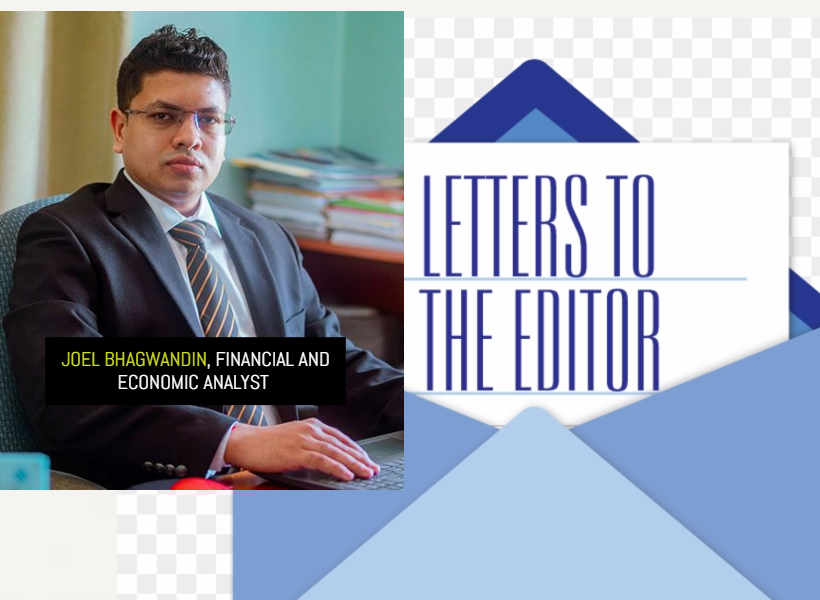Dear Editor,
Please permit to respond to two letters to the editor of Stabroek News, published in the editions of September 27th and October 1st, 2023, by Chartered Accountant, Christopher Ram.
In his letter of September 27th, Ram made two unverified allegations in respect of ExxonMobil Guyana and its co-venture partners’ financial matters, and accounting practices. Observably, Ram picked up from a baseless allegation made by another known accountant, who alleged that ExxonMobil Guyana received a large undisclosed payment for participating interest in the Stabroek block back in 2009 and 2014. Notably, after Shell’s exit in 2014, ExxonMobil Guyana sold interest to CNOOC (25%) and Hess (30%) in the block. Ram contended that effectively, ExxonMobil Guyana sold this right twice, but never accounted for it once in its books.
It is unfortunate that such an allegation is made by Ram, who failed to provide the public with the evidence to corroborate his contention. In order to verify the authenticity of Ram’s claims, one would have to examine the financial statements of Shell, Hess, CNOOC and ExxonMobil Guyana for the period 1999-2015. This can be obtained from the Deeds Registry, which the undersigned will be in receipt of shortly. Following receipt of same, a subsequent letter will be published with the findings on whether these claims are proven to be true or not.
In the meantime, however, as far as I am aware, if there was any such transaction where ExxonMobil might have sold participating interests to its co-ventures, it is unlikely that such transaction would have been conducted by the subsidiary companies registered in Guyana. Rather, it is more likely that this would have been a transaction by the parent companies. As such, there would be no accounting record in the local companies’ books. Moreover, the co-ventures, namely, Shell, Hess and CNOOC, would have entered into an arrangement with ExxonMobil to form a consortium, whereby they have agreed to share the risks, costs and benefits / returns associated with their operations in the Stabroek Block.
In the case of Shell, whatever costs Shell would have incurred from 1999-2014, those would have been sunk costs for Shell, therefore not recoverable. Crude oil was then discovered in commercial quantities in 2015, Hess and CNOOC would have joined ExxonMobil in 2014 after Shell exited.
Another allegation Chris Ram made in the same letter is that the pre-contract cost of US$460.2 million is inflated by US$92.2 million. In this regard, Chris Ram stated that “their own audited financial statements for the year December 2015 showed that they had only expended US$368 million”. Ram hastened to describe this as fraud, but again, the financial statements are not prepared on a cumulative basis. The pre-contract cost are the costs incurred for the period 1999-2015. So, to ascertain the cost or to verify same rather, one would have to examine ExxonMobil Guyana’s financial statements for the period 1999-2015, and Hess and CNOOC for the period 2014-2015, as we have already established that whatever cost Shell incurred from 1999-2014, ought to have been treated as sunk cost.
In his October 1st letter, Chris Ram argued that “the financial statements presented to the external auditors are clearly not in accordance with the requirements of the 2016 Petroleum Agreement or generally accepted accounting principles (GAAP) and standards applicable to joint-venture operations”. I am deeply perplexed at this contention by a seasoned chartered accountant of Chris Ram’s stature because Mr. Ram ought to know that there are two financial reporting standards, namely: GAAP (the one he referred to) and International Financial Reporting Standards (IFRS). He ought to also know that GAAP is the standard adopted and used particularly in the United States, whereas in Guyana, the IFRS standard has been adopted. This means that the financial statements of the local subsidiaries (ExxonMobil Guyana, Hess and CNOOC) are prepared in accordance with the IFRS convention. Further, as it relates to the accounting procedures set out in in the Petroleum Agreement (2016), Ram failed to point out which procedure (s) pursuant to Annex C was/were violated.
In this regard, Chris Ram was referring specifically to the “intangible assets” reported on ExxonMobil Guyana balance sheet for the year ended 2022, which represents “acquisition cost for interest in the offshore Stabroek, Canje and Kaieteur blocks, net of depreciation”, according to note 9 in the financial statement. Ram argued that the note suggests unambiguously that Exxon is allowed to ignore best practices not only in relation to the Stabroek block but in relation to all its interests.
Contrary to Chris Ram’s view, the fact is that the financial statements are prepared in accordance with the IFRS convention and not the GAAP rules. According to the IFRS rules, oil companies are allowed to capitalize exploration and evaluation assets as intangible assets according to their nature (IFRS 6 para 5); and when the development decision is taken, reclassify all those costs to oil and gas properties within property, plant, and equipment (PP&E). Under the IFRS standard, companies can elect to capitalize exploration expenditure as an intangible asset and amortize this on a straight-line basis over the contractually established period of exploration. Others capitalize exploration costs as tangible within construction in progress or PP&E from commencement of exploration. Additionally, software /IT costs are also classified as intangible assets under the IFRS.
Clearly, ExxonMobil elected to classify some aspects of exploration costs as intangible and tangible. The acquisition costs for the participating interests in the Stabroek, Canje and Kaieteur blocks would be those costs associated with acquiring the block. To this end, pursuant to the Petroleum Agreement and the prospecting license, there is an annual rental for the prospecting license of US$1 million, which has a life of ten years, based on the number of times the license can be renewed in accordance with the Petroleum Agreement (2016) and the Petroleum laws and regulations of the country. Thus, it is likely that this cost is classified as intangible asset, of which the sum of $2 billion reported in 2022, corresponds to the cumulative rental for interests in the referenced blocks for a ten years period (US$ 10 million/G$2.1 billion).
With the foregoing in mind, ExxonMobil did not violate the financial reporting requirements, they have in fact complied with the IFRS as I have demonstrated above.
Lastly, I do not understand his contention about ExxonMobil not complying with best practices in accounting as it relates to Exxon’s other interests in Guyana. Is he effectively implying that Exxon should prepare separate financial statements for each block? If this is what is implied, Ram of all persons would know that financial statements are not prepared in this manner.
In relation to the other unsubstantiated claims by Mr. Christopher Ram, as soon as I am in receipt of the financial statements for the period 1999-2015 for Shell, Hess, CNOOC and Exxon, I will publish the findings of my own analysis and verification.
Yours respectfully,
Joel Bhagwandin













